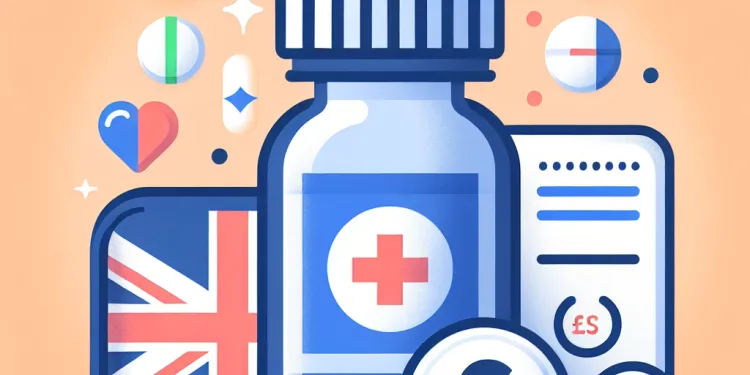
Find Help
More Items From Ergsy search
-

Are non-surgical facelifts effective?
Relevance: 100%
-

How long do the results of a facelift last?
Relevance: 51%
-

What is a mini facelift?
Relevance: 50%
-

How much does a facelift cost?
Relevance: 49%
-

What is a Facelift?
Relevance: 49%
-

Is a facelift painful?
Relevance: 47%
-

Will a facelift remove all my wrinkles?
Relevance: 45%
-

What are the common side effects after a facelift?
Relevance: 44%
-

Can a facelift be combined with other procedures?
Relevance: 43%
-

Will I have visible scars after a facelift?
Relevance: 42%
-

Who is an ideal candidate for a facelift?
Relevance: 41%
-

What is the recovery time for a facelift?
Relevance: 38%
-

Are there any risks associated with facelifts?
Relevance: 38%
-

What non-surgical treatments are available for Carpal Tunnel Syndrome?
Relevance: 35%
-

How soon can I return to work after a facelift?
Relevance: 35%
-

How soon can I return to work after a facelift?
Relevance: 35%
-

What should I expect during a consultation for a facelift?
Relevance: 34%
-

How should I prepare for a facelift?
Relevance: 32%
-

How is a facelift performed?
Relevance: 29%
-

Is financing available for a facelift?
Relevance: 29%
-

How do I choose a qualified facelift surgeon?
Relevance: 25%
-

What are the different types of facelifts?
Relevance: 17%
-

How effective are defibrillators?
Relevance: 16%
-

Prolapse Management
Relevance: 16%
-

What are the side effects of Botox?
Relevance: 15%
-

What are the side effects of Ozempic?
Relevance: 15%
-

What are the side effects of Paracetamol?
Relevance: 15%
-

What are the side effects of Botox?
Relevance: 15%
-

What are the side effects of Aspirin?
Relevance: 15%
-

How effective is the flu vaccine?
Relevance: 15%
-

What are the side effects of Ibuprofen?
Relevance: 15%
-

How effective are mosquito repellents in the UK?
Relevance: 15%
-

What are the long-term effects of sunburn?
Relevance: 15%
-

Is Vitamin C effective against colds?
Relevance: 15%
-

Are Mosquito window screens effective?
Relevance: 15%
-

How effective is the MMR vaccine?
Relevance: 15%
-

Are there any long-term effects of gonorrhoea?
Relevance: 15%
-

Are mosquito window screens effective in the UK?
Relevance: 15%
-

What are common side effects of Baxdrostat?
Relevance: 15%
-

How long do the effects of ketamine last?
Relevance: 15%
Understanding Non-Surgical Facelifts
Non-surgical facelifts are gaining popularity in the UK as an alternative to traditional surgical facelifts. These procedures offer a less invasive solution to combat the signs of aging, such as wrinkles and sagging skin, without the need for incisions or extended recovery periods. But how effective are these treatments, and what options are available?
Types of Non-Surgical Facelifts
There are several types of non-surgical facelifts commonly available. One popular method is the use of dermal fillers, which help to restore volume to the face, reduce wrinkles, and create a more youthful appearance. Another common option is Botox injections, which temporarily paralyze specific muscles to smooth out fine lines and wrinkles.
In addition to injectable treatments, there are also technology-based solutions such as ultrasound therapy and radiofrequency treatments. Ultherapy, for instance, employs focused ultrasound energy to target deep layers of the skin, encouraging collagen production without damaging the surface. Radiofrequency treatments work similarly by using heat to tighten the skin and stimulate collagen.
Effectiveness of Non-Surgical Facelifts
Non-surgical facelifts can be highly effective for individuals seeking subtle and natural-looking improvements. These treatments typically offer a temporary solution, with results lasting from a few months to over a year, depending on the technique and individual factors such as skin type and aging. The less drastic changes compared to surgical facelifts mean that non-surgical options often result in a more natural appearance, avoiding the "pulled" look sometimes associated with cosmetic surgery.
One advantage of non-surgical facelifts is the minimal downtime. Most procedures are completed within an hour and allow individuals to return to their daily activities almost immediately. Furthermore, these treatments carry fewer risks than surgery, with side effects generally limited to temporary redness, swelling, or bruising.
Considerations and Limitations
While non-surgical facelifts are effective for many, they may not be suitable for everyone. Individuals with significant skin laxity or deep wrinkles may find surgical options more beneficial. Additionally, because non-surgical treatments are temporary, they may require repeat visits to maintain results, making them a recurring investment.
It is also essential to choose a qualified and experienced practitioner. In the UK, ensure that your chosen provider is registered with relevant regulatory bodies, such as the General Medical Council (GMC) or the Joint Council for Cosmetic Practitioners (JCCP). Thoroughly researching and consulting with a professional will help you understand the potential outcomes and determine the best approach for your aesthetic goals.
Conclusion
Non-surgical facelifts offer an effective, less invasive alternative for individuals seeking to rejuvenate their appearance without undergoing surgery. While not suitable for everyone, these treatments can provide natural-looking results with minimal downtime. By understanding the different options and consulting with qualified professionals, individuals can make informed decisions tailored to their personal needs and preferences.
Understanding Non-Surgical Facelifts
Non-surgical facelifts are becoming popular in the UK instead of normal surgery facelifts. They are a way to help with signs of getting older, like wrinkles (lines) and loose skin, without having to cut the skin or spend a long time getting better. But are these treatments good, and what kinds can you get?
Types of Non-Surgical Facelifts
There are a few types of non-surgical facelifts you can choose. One popular kind is using dermal fillers. These help make the face look fuller, reduce lines, and help you look younger. Another choice is Botox. Botox helps relax certain muscles so lines look smoother.
Besides things you inject, there are also treatments using technology. One is called ultrasound therapy. It uses sound waves to help the skin make more collagen (a skin-strengthening protein) without hurting the surface. Another is radiofrequency treatment, which uses heat to make skin tighter and help produce more collagen.
Effectiveness of Non-Surgical Facelifts
Non-surgical facelifts can work well if you want small, natural changes. They usually last a few months to more than a year, depending on what you choose and your skin type. These treatments don’t make big changes like surgery, so you look more natural.
One good thing about non-surgical facelifts is they don't take much recovery time. They usually take about an hour, and you can go back to your normal activities quickly. These treatments are also safer than surgery, with only some redness, swelling, or bruising, which goes away soon.
Considerations and Limitations
Non-surgical facelifts work for many people, but not for everyone. If your skin is very loose or you have deep lines, surgery might be better. Because these treatments are temporary, you might need to go back a few times to keep the results. This can add up over time.
It is important to pick a skilled and experienced doctor. In the UK, make sure the doctor is registered with groups like the General Medical Council (GMC) or the Joint Council for Cosmetic Practitioners (JCCP). Researching well and talking to a professional will help you know what to expect and find the best way to meet your beauty goals.
Conclusion
Non-surgical facelifts are a good option if you want to look younger without having surgery. They are not for everyone, but they give results that look natural and don’t take long to recover from. Learn about your choices and talk to skilled professionals, so you can decide what is best for you and what you need.
Frequently Asked Questions
What is a non-surgical facelift?
A non-surgical facelift is a minimally invasive procedure that aims to rejuvenate the appearance of the face without surgery. It often involves techniques such as injectable fillers, muscle relaxants, ultrasound, or laser treatments to tighten and lift the skin.
How effective are non-surgical facelifts?
Non-surgical facelifts can be effective for individuals looking to improve the appearance of fine lines, wrinkles, or slight sagging. However, the results are typically less dramatic than surgical facelifts and may require regular maintenance.
How long do the results of non-surgical facelifts last?
The duration of results varies depending on the treatment type. Injectable fillers may last from 6 months to 2 years, while treatments like Ultherapy might last a year or more. Regular maintenance treatments are often needed to sustain results.
What are the advantages of non-surgical facelifts over surgical facelifts?
Non-surgical facelifts generally have fewer risks, lower costs, no need for general anesthesia, shorter recovery times, and less discomfort compared to surgical facelifts.
Are there any downsides to non-surgical facelifts?
The downsides include more subtle results compared to surgery, the need for repeated treatments to maintain effects, and limitations in addressing severe sagging or deep wrinkles.
Who is a good candidate for a non-surgical facelift?
Typically, younger individuals with mild to moderate signs of aging and good skin elasticity are good candidates. It's best for those looking for subtle enhancements rather than dramatic changes.
What types of non-surgical facelift procedures are available?
Available procedures include dermal fillers, Botox, laser skin resurfacing, ultrasound therapy, radiofrequency treatments, and thread lifts.
Is there any downtime associated with non-surgical facelifts?
Non-surgical facelifts usually have minimal downtime. Patients might experience some swelling, redness, or bruising, but they can typically resume normal activities immediately or within a day or two.
How soon can I see results after a non-surgical facelift?
Results can often be seen immediately with procedures like dermal fillers, though full results might take a couple of weeks as any swelling subsides. Other treatments, like ultrasound therapy, may take a few months for full effect.
How much does a non-surgical facelift cost?
Costs can vary widely depending on the specific treatment and geographic location. Prices can range from a few hundred to several thousand dollars.
What are the risks of non-surgical facelifts?
Risks include temporary side effects such as redness, swelling, bruising, and in rare cases, infection or allergic reactions.
Can non-surgical facelifts be combined with other treatments?
Yes, they are often combined with other aesthetic treatments to enhance results, such as chemical peels, microdermabrasion, or skincare regimens.
Are non-surgical facelifts painful?
Most non-surgical facelift procedures are relatively painless. Some treatments may cause discomfort, but this is usually mild and temporary.
How should I prepare for a non-surgical facelift?
Preparation typically includes avoiding blood-thinning medications and supplements for a few days before the procedure and following any specific instructions given by the provider.
What should I do after a non-surgical facelift?
Aftercare can include avoiding sun exposure, following a gentle skincare routine, avoiding strenuous exercise for a few days, and following the provider's instructions.
Can anyone perform non-surgical facelifts?
Only licensed and trained professionals, such as dermatologists or plastic surgeons, should perform these procedures to ensure safety and optimal results.
Are the results of non-surgical facelifts natural-looking?
When performed by skilled professionals, non-surgical facelifts often provide natural-looking results by enhancing rather than dramatically altering facial features.
Can non-surgical facelifts address all signs of aging?
Non-surgical facelifts are effective for addressing mild to moderate signs of aging, but they may not be suitable for severe sagging or deep wrinkles which might require surgical intervention.
Are non-surgical facelifts safe for all skin types?
Most non-surgical facelifts are safe for a variety of skin types and tones, but it's important to consult with a professional to ensure the right treatment for your individual skin needs.
How do I choose the right non-surgical facelift procedure?
Choosing the right procedure depends on your specific aesthetic goals, skin condition, and budget. Consulting with a qualified aesthetic professional can help you make an informed decision.
What is a non-surgical facelift?
A non-surgical facelift is a way to make your face look younger without surgery. It uses things like creams, lasers, or tiny needles to help your skin look smoother and tighter.
To understand better, you can:
- Watch videos that show how it works.
- Ask a grown-up to explain it to you.
- Use apps that read the text out loud for you.
A non-surgical facelift is a way to make your face look younger without having surgery. It uses things like special injections, relaxing muscles, sound waves, or laser light to make your skin tighter and lift it up.
How well do non-surgical facelifts work?
Non-surgical facelifts are treatments that can make your face look younger without surgery. They use things like lasers, injections, or special creams.
These treatments can help make skin tighter and reduce wrinkles. But, they don't last as long as surgery, and you might need to do them more often.
If you are thinking about a non-surgical facelift, it is a good idea to talk to a doctor. They can help you decide what is best for you.
Using pictures or videos might help you understand how these treatments work better.
Non-surgical facelifts can help if you want to make your skin look smoother. They can make lines and wrinkles look better. They can also help if your skin is sagging a bit. But they might not change your face as much as surgery would. You might need to get them done regularly to keep the results.
How long do non-surgical facelift results last?
A non-surgical facelift makes your skin look younger without surgery. The results can last for different times. Here’s how long they usually last:
- Most last about 6 months to 2 years.
- It depends on the type of treatment you get.
- Some treatments last longer than others.
To make the results last longer, you can:
- Take care of your skin every day.
- Use sunscreen to protect your skin.
- Eat healthy food and drink plenty of water.
- Ask a skincare expert for advice.
Helpful tools can make it easier to take care of your skin. You can use reminder apps or set alarms to remember when to care for your skin.
How long results last can change based on the type of treatment.
For example, some treatments that use injections can last between 6 months and 2 years.
Treatments like Ultherapy might last a year or longer.
You might need to have regular treatments to keep the results looking good.
Helpful tools: Making a calendar to remember your treatments can be useful.
What is good about non-surgical facelifts compared to surgical facelifts?
Non-surgical facelifts have some good points:
- They are less painful. This means it does not hurt as much.
- You can recover faster. This means you can get back to normal things quickly.
- They usually cost less. This means you spend less money.
- They have fewer risks. This means they are safer.
- You do not need to go to sleep for the procedure. This means you stay awake.
Tools that can help include:
- Reading with a friend to help understand better.
- Using a simple dictionary if you find a word difficult.
Non-surgical facelifts are safer. They cost less money, and you don't need to be put to sleep. You feel better faster and they don't hurt as much as surgical facelifts.
Do non-surgical facelifts have any bad sides?
A non-surgical facelift is when you get a treatment to make your face look younger without surgery. But there can be some bad sides to it.
Here are a few things to think about:
- Some people might have a little pain or redness after.
- The changes might not last as long as surgery.
- It can still cost a lot of money.
- It might take many treatments to see a big change.
Talk to a doctor to know more.
If reading is hard, you can:
- Ask someone you trust to read with you.
- Use a text-to-speech tool to listen.
- Take notes or draw pictures to help understand.
The downsides are:
- The changes are not as big as surgery.
- You need to have the treatment again to keep the effects.
- It doesn't work well on really loose skin or deep wrinkles.
Use pictures and simple videos to help understand better.
Who should think about a non-surgical facelift?
If you want to look younger without surgery, you might like a non-surgical facelift.
This is good for:
- People who want a gentle change in how they look.
- People who do not want cuts or stitches.
- People looking for a quick recovery time.
Talk to a doctor to find out if this is good for you.
People who are young and show small signs of getting older might like this. It works best if their skin is stretchy. This is good for people who want little changes, not big ones.
If reading is hard, try using a tool that reads text out loud. Also, using your finger to follow along can help.
What are ways to lift the face without surgery?
You can lift the face without surgery using different methods. Here are some options:
- Fillers: These are injections that help smooth the skin and make it look fuller.
- Botox: This is an injection that helps relax muscles to reduce wrinkles.
- Laser Treatment: This uses light to make the skin tighter and smoother.
- Ultrasound Therapy: This uses sound waves to lift and tighten the skin.
- Microneedling: This uses tiny needles to help the skin heal and look better.
These methods help the skin look younger and smoother without surgery.
Tip: If reading is hard, try using audiobooks or voice reading apps to help understand words better.
You can try a few different treatments. These are:
- Fillers: These make your skin look fuller.
- Botox: This helps smooth out lines on your face.
- Laser Therapy: This uses light to help your skin look better.
- Ultrasound Therapy: This uses sound waves to lift your skin.
- Radiofrequency: This uses heat to tighten your skin.
- Thread Lifts: This is when tiny threads are used to lift and tighten your skin.
Tools like audiobooks and reading apps can help make reading easier.
Do you need to rest after a non-surgical facelift?
A non-surgical facelift is a treatment to make your face look younger without surgery.
If you have a non-surgical facelift, you might feel fine right away. You might not need to rest or take a break.
But sometimes, your face might look red or feel a little sore. It should get better soon.
You can use a cool cloth or ice pack on your face to feel better. Follow what your doctor says to help your face heal.
If you are worried, talk to your doctor for advice. They can help you understand what to expect.
Non-surgical facelifts are treatments that don’t need surgery. After having one, you might feel a little sore or see some redness or bruises. But don’t worry, you can usually go back to your normal activities the same day or the next day.
If you find reading hard, you can use tools that read aloud or help highlight words. Talking to someone about what you’re reading can also help you understand better.
When will I see changes after a non-surgery facelift?
A non-surgery facelift helps lift and tighten skin without cutting. It uses special tools.
You might see some changes right away.
More changes might happen in a few weeks.
Everyone is different, so changes can take a bit longer for some people.
Tip: Ask the person doing the treatment to explain what to expect.
Supporting tools: Use a notebook or record what they say on your phone to remember.
You can often see results right away with treatments like dermal fillers. But, sometimes it might take a couple of weeks for all the swelling to go down. Other treatments, like ultrasound therapy, can take a few months to show full results.
What is the price of a non-surgery facelift?
The cost can be different depending on what treatment you need and where you are. It might cost a few hundred dollars, or it might cost a few thousand dollars.
What could go wrong with non-surgical facelifts?
Sometimes, there can be short-term problems like your skin turning red, swelling up, getting a bruise, or in some unusual cases, getting an infection or an allergic reaction.
If you need help understanding this, try reading with a friend or using a tool like a simple dictionary. This can help you learn new words.
Can you mix non-surgical facelifts with other treatments?
Yes, you can mix non-surgical facelifts with other treatments.
It's like trying different things together to make your skin look and feel better.
If you're not sure, you can ask a doctor for advice. They can help you choose the right mix.
You can also use pictures or videos to understand how the treatments work. That can make it easier to know what to expect.
Yes, they are often used with other beauty treatments to improve results. These can include chemical peels, microdermabrasion, or skincare routines.
Do non-surgical facelifts hurt?
A non-surgical facelift is a way to make your face look younger without surgery. Here is what you should know:
- Most people say it does not hurt much.
- Some people feel a little sting or warmth.
- Doctors use tools to help you feel comfortable.
If you are worried, you can:
- Ask your doctor questions.
- Use a stress ball or listen to music to relax.
Most treatments to lift your face without surgery do not hurt much. Some might feel a bit uncomfortable, but this won't last long.
How can I get ready for a facelift without surgery?
Before you have the procedure, you should stop taking some medicines and supplements that make your blood thin. You need to do this a few days before. Follow the special instructions your doctor gives you.
What should I do after a non-surgical facelift?
Here is what you can do:
- Rest: Take it easy. Relax and don’t rush.
- Ice Pack: Put a cool pack on your face if it feels sore.
- Follow Doctor’s Advice: Do what the doctor says. Ask if you are unsure.
- Stay Hydrated: Drink lots of water.
- Gentle Skincare: Use soft products on your skin. Be gentle.
- Avoid Sun: Stay out of the sun. Wear a hat and sunscreen if you go out.
- No Makeup: Do not wear makeup until the doctor says it is okay.
- No Intense Exercise: Avoid heavy exercise until you feel better.
These tips can help your face heal nicely.
You can use reminders to help you remember these steps.
After you get treatment, here are some things to do:
- Stay out of the sun.
- Use gentle, soft creams on your skin.
- Don't do hard exercise for a few days.
- Follow the rules your doctor gives you.
Using a calendar or alarm can help you remember these steps. If you are unsure, ask someone you trust to help you.
Who can do non-surgical facelifts?
Only special doctors, like skin doctors or surgeons, should do these treatments. They keep you safe and make sure it works well.
Do non-surgical facelifts make your face look natural?
A non-surgical facelift is a way to make your skin look younger without surgery. People often wonder if it looks natural. Here are some things to help:
- Ask your doctor: They can show you pictures of before and after the facelift.
- Start small: Try a small treatment to see if you like the results.
- Bring a friend: Someone you trust can give you their opinion.
- Use apps: Some apps can help you see how you might look after the facelift.
When done by experts, non-surgical facelifts can make faces look better in a natural way. They help your face look nicer without changing it too much.
Can a non-surgical facelift help with all signs of getting older?
A non-surgical facelift can make your skin look younger without surgery. It can help with some signs, like wrinkles and loose skin. But it might not fix everything. It's a good idea to talk to a doctor. They can help you decide what's best for your skin.
Here are some tools that might help:
- Ask a friend or family member for help when reading.
- Use apps that read text out loud.
- Look at pictures or videos about non-surgical facelifts to understand better.
Non-surgical facelifts can help make your face look younger without surgery. They work well for small to medium changes, like getting rid of tiny wrinkles or lifting a bit of saggy skin. If your skin is very loose or you have deep wrinkles, you might need surgery to fix it.
Are Non-Surgical Facelifts Safe for Everyone's Skin?
It is important to find out if non-surgical facelifts are safe for your skin type. These treatments use special tools and do not require surgery. They can make your skin look younger.
Not everyone's skin is the same. Some people have sensitive skin or skin conditions. Always talk to a doctor or skin expert before trying a new treatment. They can help you understand if it is safe for your skin.
Using simple products like gentle cleansers and moisturizers can help. Protect your skin by using sunscreen every day. Listening to your skin expert's advice is a good idea.
If you find reading difficult, ask someone you trust to read with you or use tools that read text aloud. This can help you understand better.
Many non-surgical facelifts are safe for different types and colors of skin. But it is important to talk to a doctor or expert. This is to make sure you get the best treatment for your own skin needs.
How do I pick the best non-surgical facelift?
Want to make your face look younger without surgery? Here's how you can choose the best way:
- Talk to a doctor or skin expert. They can help you find the right treatment for your skin.
- Think about what you want. Do you want to smooth out wrinkles or lift your skin?
- Ask about different options. There are treatments like laser therapy, fillers, or special creams.
- Read information about each option. Some might have more benefits or side effects.
- See if your friends or family have tried any treatments. They can share their experience.
Tools that can help:
- Look at pictures of before and after treatments.
- Watch videos that explain each treatment.
- Use apps that help you understand skin care better.
- Draw or write down what you learn. This helps remember the details.
To pick the best treatment, think about what you want to change, how your skin is doing, and how much money you have. Talk to an expert who knows about beauty treatments. They can help you choose the right one.
Useful Links
- Ergsy carfully checks the information in the videos we provide here.
- Videos shown by Youtube after a video has completed, have NOT been reviewed by ERGSY.
- To view, click the arrow in centre of video.
- Most of the videos you find here will have subtitles and/or closed captions available.
- You may need to turn these on, and choose your preferred language.
- Go to the video you'd like to watch.
- If closed captions (CC) are available, settings will be visible on the bottom right of the video player.
- To turn on Captions, click settings .
- To turn off Captions, click settings again.
More Items From Ergsy search
-

Are non-surgical facelifts effective?
Relevance: 100%
-

How long do the results of a facelift last?
Relevance: 51%
-

What is a mini facelift?
Relevance: 50%
-

How much does a facelift cost?
Relevance: 49%
-

What is a Facelift?
Relevance: 49%
-

Is a facelift painful?
Relevance: 47%
-

Will a facelift remove all my wrinkles?
Relevance: 45%
-

What are the common side effects after a facelift?
Relevance: 44%
-

Can a facelift be combined with other procedures?
Relevance: 43%
-

Will I have visible scars after a facelift?
Relevance: 42%
-

Who is an ideal candidate for a facelift?
Relevance: 41%
-

What is the recovery time for a facelift?
Relevance: 38%
-

Are there any risks associated with facelifts?
Relevance: 38%
-

What non-surgical treatments are available for Carpal Tunnel Syndrome?
Relevance: 35%
-

How soon can I return to work after a facelift?
Relevance: 35%
-

How soon can I return to work after a facelift?
Relevance: 35%
-

What should I expect during a consultation for a facelift?
Relevance: 34%
-

How should I prepare for a facelift?
Relevance: 32%
-

How is a facelift performed?
Relevance: 29%
-

Is financing available for a facelift?
Relevance: 29%
-

How do I choose a qualified facelift surgeon?
Relevance: 25%
-

What are the different types of facelifts?
Relevance: 17%
-

How effective are defibrillators?
Relevance: 16%
-

Prolapse Management
Relevance: 16%
-

What are the side effects of Botox?
Relevance: 15%
-

What are the side effects of Ozempic?
Relevance: 15%
-

What are the side effects of Paracetamol?
Relevance: 15%
-

What are the side effects of Botox?
Relevance: 15%
-

What are the side effects of Aspirin?
Relevance: 15%
-

How effective is the flu vaccine?
Relevance: 15%
-

What are the side effects of Ibuprofen?
Relevance: 15%
-

How effective are mosquito repellents in the UK?
Relevance: 15%
-

What are the long-term effects of sunburn?
Relevance: 15%
-

Is Vitamin C effective against colds?
Relevance: 15%
-

Are Mosquito window screens effective?
Relevance: 15%
-

How effective is the MMR vaccine?
Relevance: 15%
-

Are there any long-term effects of gonorrhoea?
Relevance: 15%
-

Are mosquito window screens effective in the UK?
Relevance: 15%
-

What are common side effects of Baxdrostat?
Relevance: 15%
-

How long do the effects of ketamine last?
Relevance: 15%


